- Details
Conference
Invited lecture at the FLTPD
On April 30th 2024, Prof. Dr. Judith Golda has been invited to give a talk on "Diagnostics for atmospheric pressure plasmas in plasma catalysis" at the Frontiers in Low Temperature Plasma Diagnostics (FLTPD XV) conference, which was held in Prague, Czech Republic. The Conference Centre of the Academy of Sciences of the Czech Republic proved to be an excellent venue for both, intriguing talks and posters on the latest advancements of plasma research, and scientific networking in the after hours.
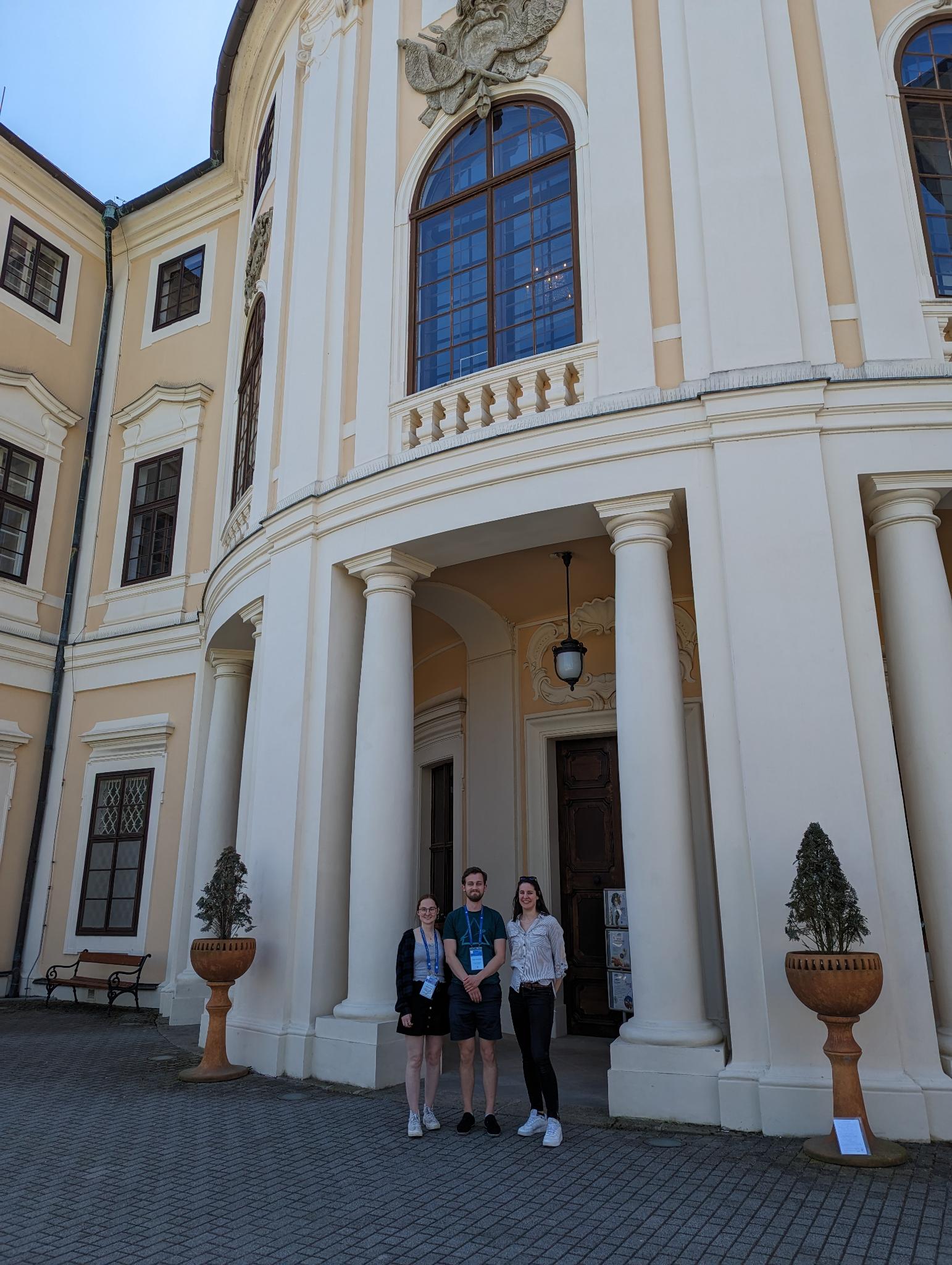
- Details
Public Outreach
Saturday Morning Physics
On December 14, 2024, Prof. Dr. Judith Golda brought the magic of physics to life during the Saturday Morning Physics lecture series, held at St. Paul's Church in the heart of Bochum.
In this special Advent edition, the audience was amazed by self-made snow, shimmering golden miniature reindeer, and tinsel that moved as if by magic - without a single touch. A particularly enchanting moment came when a Rubens tube transformed sound waves into flickering flames, like multiple candles of varying heights dancing to the melody of a Christmas song.
With participants ranging in age from 2 to 82, the event was a great success, offering a captivating glimpse into the wonders of physics.
Further informartion is provided on our instagram channel: https://www.instagram.com/reel/DDxL30ps12G/?utm_source=ig_web_copy_link
and on our website: https://www.physik.ruhr-uni-bochum.de/transfer/physikalischer-winterzauber-gelungene-premiere/
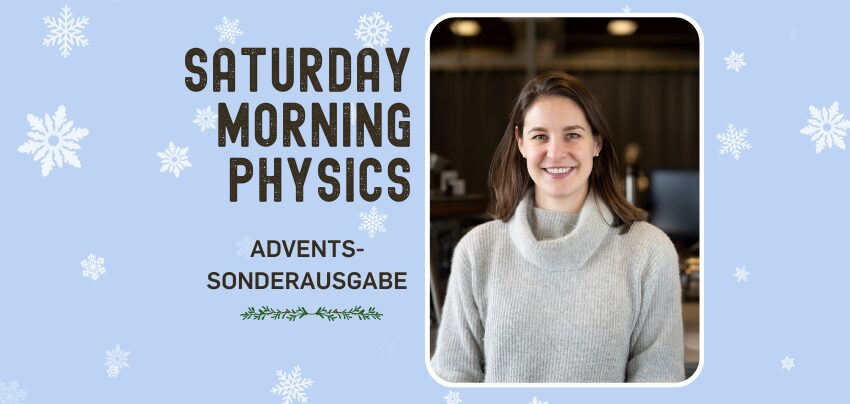
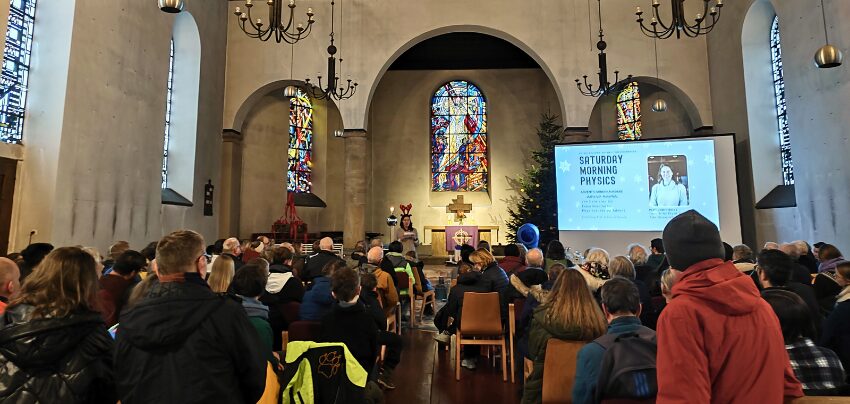
- Details
Outgoing research stay
Laboratory stay in the USA
As part of his PhD, PhD student David Steuer (project A6) is spending nine weeks at the Sandia Plasma Research Facility (PRF) in Albuquerque, New Mexico, USA. Researchers can apply at PRF to submit project ideas. After a successful review process, there is then the option of using one of the excellently equipped laboratories or handing over the experiment to the cooperation partner.
The PRF also offers simulation capacities. In David's project, atomic oxygen densities are to be measured within a microcavity plasma array. A state-of-the-art picosecond laser system from the PRF can be used for this purpose.
The stay was funded by the Research School of the Ruhr-Universität Bochum (PRINT programme) and the CRC 1316.
- Details
Publications
Paper on the cover of "Plasma Processes und Polymers"
The paper by Eloise Mestre, Inna Orel, Daniel Henze, Laura Chauvet, Sebastian Burhenn, Sebastien Dozias, Fabienne Brule-Morabito, Judith Golda and Claire Douat made it onto the cover of the renowned journal Plasma Processes and Polymers. This covers the interdisciplinary field of low-temperature plasma science. Congratulations to the authors!
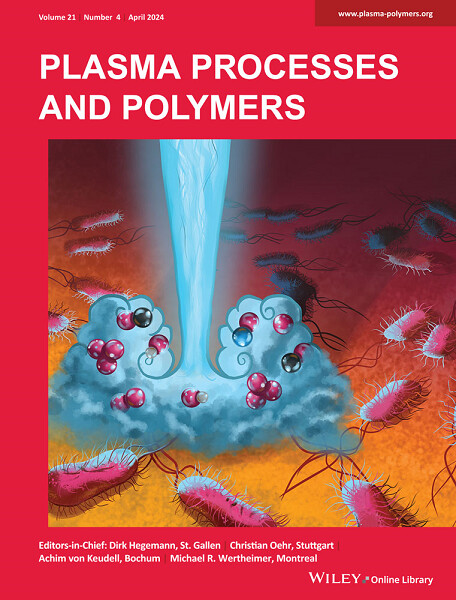
- Details
Open position: Bachelor thesis
Plasma-Driven Catalytic Oxidation of n-Butane: over MnO₂, CaO, and Composite Catalysts in Microarray Reactors

The combination of dielectric barrier discharge (DBD) plasma and catalysts offers a promising avenue for hydrocarbon conversion, particularly for n-butane oxidation. Plasma generates highly reactive species, such as radicals and ions, that can activate reaction pathways unavailable under conventional catalytic conditions. Understanding how plasma modifies catalyst surfaces and how catalysts influence plasma reactivity is critical for optimizing these systems. MnO₂, known for its redox properties, and CaO, valued for its basicity, provide an ideal platform for exploring these synergistic effects.
This project focuses on the plasma-assisted oxidation of n-butane over catalysts, utilizing a microarray DBD reactor. Reaction products will be analyzed in detail using FTIR spectroscopy to determine conversion rates and product distributions. This approach enables a detailed examination of the plasma-catalyst synergy and its impact on n-butane oxidation. By varying plasma parameters and catalyst compositions, the study aims to uncover how plasma modifies catalytic behavior and how catalysts, in turn, influence plasma chemistry. In addition, the study will also measure the voltage, current, and charge during discharge to quantitatively characterize plasma parameters.
MnO₂ acts as an oxidation-reduction catalyst in the reaction, which can promote the C-H bond cleavage of n-butane by providing active oxygen species (such as surface oxygen or oxygen vacancies), thereby enhancing the reaction activity. CaO, with its strong alkalinity, can effectively adsorb and activate hydrocarbon molecules, reduce reaction energy barriers, and further optimize product distribution. The electrical parameters can directly reflect the intensity and characteristics of plasma discharge, closely related to the active species generated by plasma, and are the basis for understanding the interaction between plasma and catalysts. FTIR spectroscopy can quantitatively detect gas-phase reaction products and deeply study the synergistic effect of plasma catalysts and their influence on the n-butane oxidation reaction pathway.
Contact person:
Yue Cheng (NB 5/172),
Judith Golda (NB 5/127),
Prerequisites:
Previous knowledge of plasma physics is desirable, but not required
When?: By arrangement
Laboratory tour: NB 5/172
- Details
Open position: Bachelor thesis
Determination of the conversion of CO₂ in a microplasma array using emission spectroscopy
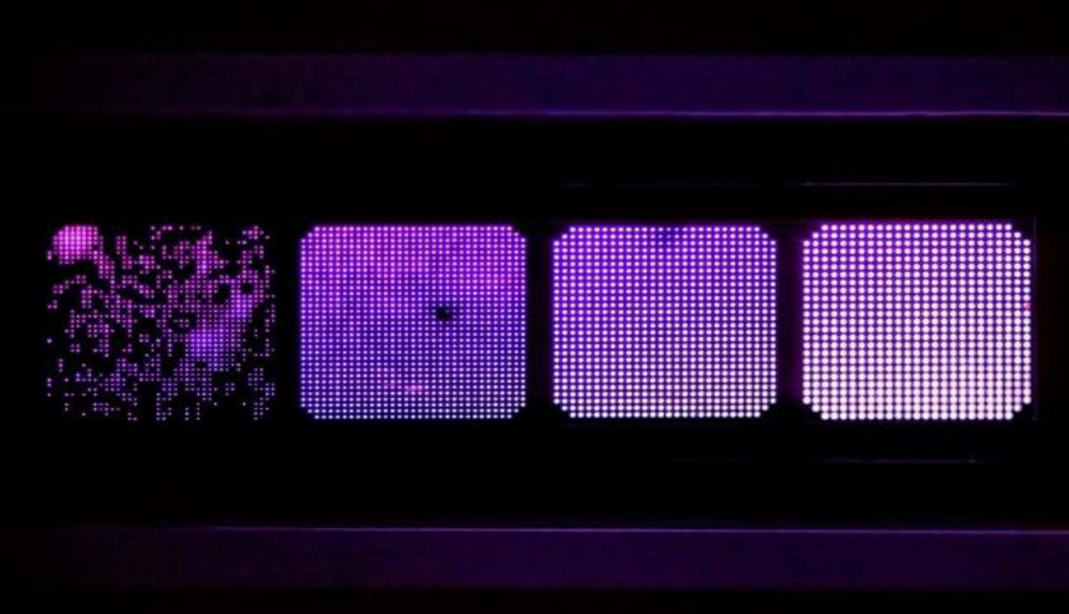
The microplasma array is based on a dielectric barrier discharge (DBD) and is to be used to convert environmentally harmful gases such as volatile organic compounds (VOCs) or CO₂. The aim is to make the conversion of substances as energy-efficient as possible by integrating catalysts into the discharge in future. However, precise knowledge of the converted densities is essential for successful integration. In particular, the conversion of CO₂ to CO and O plays a central role, as it forms the basis for quantifying the converted quantities. Measuring these densities is often a challenge. Although methods such as TALIF (laser method) or FTIR spectroscopy (IR absorption spectroscopy) are possible, they can only be used to a limited extent in plasma operation.
A promising alternative to measuring the CO and O densities in the discharge is the use of actinometry. This spectroscopic method makes it possible to analyze the emission of the plasma directly by observing the emissions of the species of interest and an actinometer gas with a known density. While the measurement of the emission spectrum is relatively easy to perform, the evaluation and determination of the densities is a much greater challenge, since, among other things, more precise knowledge of the electron energy distribution function (EEDF) is required.
The project is part of project area A6 in SFB 1316, which deals with the investigation of interactions between DBDs and catalysts.
Contact:
Henrik van Impel (NB 5/171),
Judith Golda (NB 5/127),
Prerequisites:
Previous knowledge of plasma physics is desirable but not required.
When?: by arrangement
Laboratory tour: NB 5/173
- Details
Open position: Bachelor thesis
Characterization of the hydrogen peroxide production of an atmospheric pressure plasma jet operated with ns pulses
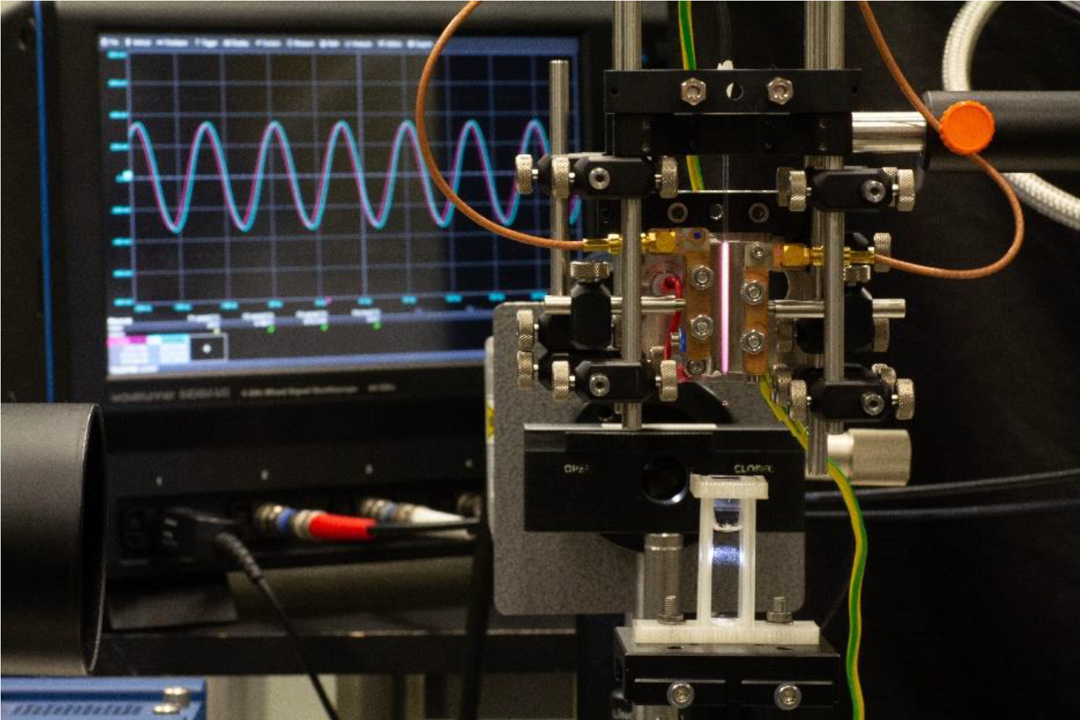
The transport of reactive species from an atmospheric pressure plasma jet (APPJ) into liquids offers various applications, such as the plasma-assisted biocatalysis. Previous work has demonstrated that APPJs operated in noble gases with RF excitation can be used effectively for plasma-assisted biocatalysis. However, the use of noble gases is not economical or sustainable for large-scale applications, so alternative operating gases such as nitrogen or air are attractive. In addition to RF excitation, the capillary plasma jet used can also be operated with higher voltage pulses in the ns range, so that operation in nitrogen or air is possible.
In this bachelor thesis, the hydrogen peroxide production of the Capillary Plasma Jet operated with ns pulses is to be investigated, as hydrogen peroxide is the required species in biocatalysis. This is initially carried out in helium in order to ensure a direct comparison with RF operation. Subsequently, the operating gas can be changed to nitrogen or air and the hydrogen peroxide production can be characterized in this mode. In order to be able to apply the investigations to biocatalysis, the hydrogen peroxide concentration in plasma-treated liquids is measured using spectrophotometry and UV absorption.
Contact:
Steffen Schüttler (NB 5/66),
Judith Golda (NB 5/127),
Prerequisites:
Previous knowledge of plasma physics is desirable, but not required
When?: by arrangement
Lab tour: NB 5/28

